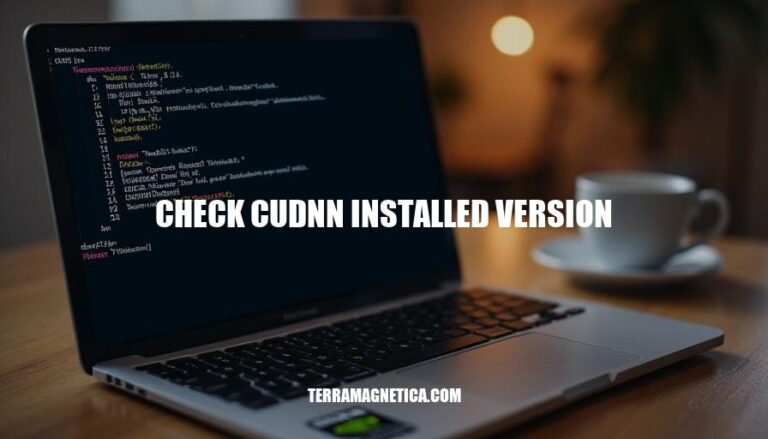


Verifying the installed version of cuDNN is crucial for ensuring compatibility and optimal performance in deep learning applications. This step helps confirm that your deep learning environment is correctly set up, allowing frameworks like TensorFlow and PyTorch to leverage GPU acceleration effectively.
Open Terminal:
Ctrl + Alt + T.Cmd + Space, type “Terminal”, and press Enter.Run Command:
cat /usr/local/cuda/include/cudnn_version.h | grep CUDNN_MAJOR -A 2
This command will display the installed cuDNN version.
To check the cuDNN version using the nvcc --version command, follow these steps:
nvcc --version
nvcc: NVIDIA (R) Cuda compiler driver
Copyright (c) 2005-2023 NVIDIA Corporation
Built on Fri_Jan_22_19:32:24_PST_2023
Cuda compilation tools, release 12.1, V12.1.105
Build cuda_12.1.r12.1/compiler.30521435_0
To find the cuDNN version, you need to check the compatibility of your CUDA version with cuDNN versions. Refer to the cuDNN support matrix on NVIDIA’s documentation.
Sure, here are the steps to verify the cuDNN version using TensorFlow:
Install TensorFlow:
pip install tensorflow
Check cuDNN Version:
import tensorflow as tf
from tensorflow.python.platform import build_info as tf_build_info
print("cuDNN version:", tf_build_info.cudnn_version_number)
Run a Simple TensorFlow Script:
import tensorflow as tf
# Create a simple computation graph
a = tf.constant(2.0)
b = tf.constant(3.0)
c = a + b
# Run the computation
with tf.Session() as sess:
result = sess.run(c)
print("Result of the computation:", result)
These steps will help you verify the cuDNN version and confirm that TensorFlow is correctly installed and working.
Here’s a basic PyTorch script to check the cuDNN version:
import torch
# Check if CUDA is available
if torch.cuda.is_available():
cudnn_version = torch.backends.cudnn.version()
print(f"cuDNN version: {cudnn_version}")
else:
print("CUDA is not available.")
Run this script, and it will print the cuDNN version if CUDA is available.
Verifying the installed version of cuDNN is crucial for ensuring compatibility and optimal performance in deep learning applications.
It helps confirm that your deep learning environment is correctly set up, allowing frameworks like TensorFlow and PyTorch to leverage GPU acceleration effectively.
Regular checks are necessary to maintain system compatibility and prevent potential issues with model training and deployment.